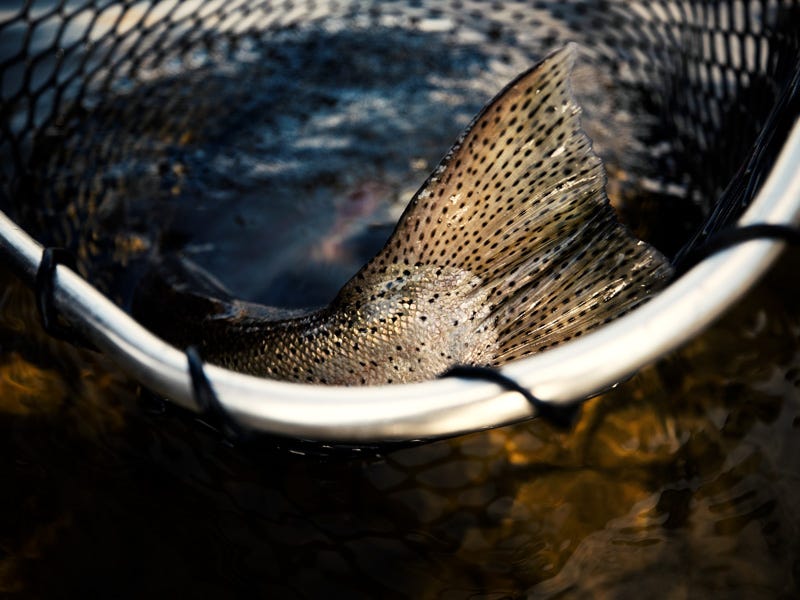Trolling Tactics for Steelhead

We can all picture it. The perfect fall day on our favorite steelhead river. Autumn colors reflect off clear green waters, the oars of the drift boat are making their soft rhythmic splashes, and the tips of the rods in the holders are dancing. Eventually, you use up your attention span; and it’s always then that you get that drag ripping, head shaking, cartwheeling tight line grab that you’ve been waiting for. When steelhead, from Idaho’s Clearwater River, hit plugs, they hit them hard! Quiet moments and sharing stories with your friends are often broken by utter chaos and panic. Fish ranging from 28 to 40 inches will stop the heart of most fishermen when they go airborne.

Back trolling is an effective steelhead technique from Idaho’s summer catch and release season to the coldest months of winter. It can be effective in clear or dirty water and especially when more subtle tactics are less effective.
What Gear do you Need for Back Trolling?
There are a few pieces of gear the aspiring back troller needs. To start, medium power rods, with a moderate action, give plenty of power for fighting fish but also allow the rod tip to wiggle. Watching the rod tip is important to let you know if your lure is bumping bottom, fouled with debris, or snagged. Most trollers prefer 8 to 9-foot rods for fishing and, often, they are two-piece rods, so they don’t take up too much room in the boat. Rods like Okuma’s SST, the Lamiglas NWSS, or a G. Loomis E6X are all great choices. Next, atop these, I would mount a small to moderate sized line counter reel such as the Daiwa Sealine 17SG, an Okuma Coldwater LC, or an Abu Garcia’s 5500 LC. For line, I prefer using 30-pound Power Pro braided fishing line as a main line with 10 feet of 15-pound monofilament or fluorocarbon leader. Running braid is a great way to watch the action of the plug and allows the plug to cut down into the water column. The lures that I prefer to start out with are a Brad’s wiggler or a Yakima’s mag lip. Also, regularly used, is a diver with bait (normally sand shrimp) at the end of a four-plus foot leader. Divers can be plugs, like mudbugs, or jet divers.
The best rods and reels are within reach. Check this out.

Just like any fishing tactic, you need proper water conditions. Moderately fast runs from 3 to 15-feet deep are the most easily fished steelhead water for back trolling. Using the oars or trolling motor on your boat, use just enough effort to slow your decent downstream by about half or less the speed of the stream. Let lures out from the boat far enough that the lures flutter the rods, but occasionally bump causing the flutter to stop. Depending on lure choice, depth, speed, etc. this is normally anywhere from 40 to 75 feet from the boat.
Back Trolling Techniques
There are two schools of thought when back trolling: descend straight downriver or slowly sweep side to side in the channel. Both are effective techniques and produce fish. Runs are often worked slowly from the riffle at the top, to the tailout at the bottom. You’ll want to work lures into the soft edges and along the edge of the channel. Steelhead regularly hold in this frog water on the edges, which is visible by gentle ripples on the surface where submerged boulders are breaking the current. Also, watch your bankside rod to make sure your lure is in enough current to keep your lure swimming.
Ever drift beads on the Snake? Read this.
There is no doubt that back trolling is an effective way to catch steelhead any time of the year. It is a proven tactic and with a little tweaking to certain setups, anyone can catch fish. For more information on back trolling gear, tactics, or techniques, come see us at the store. We will get you set up and out catching fish in no time.
By Caleb Hawkins

